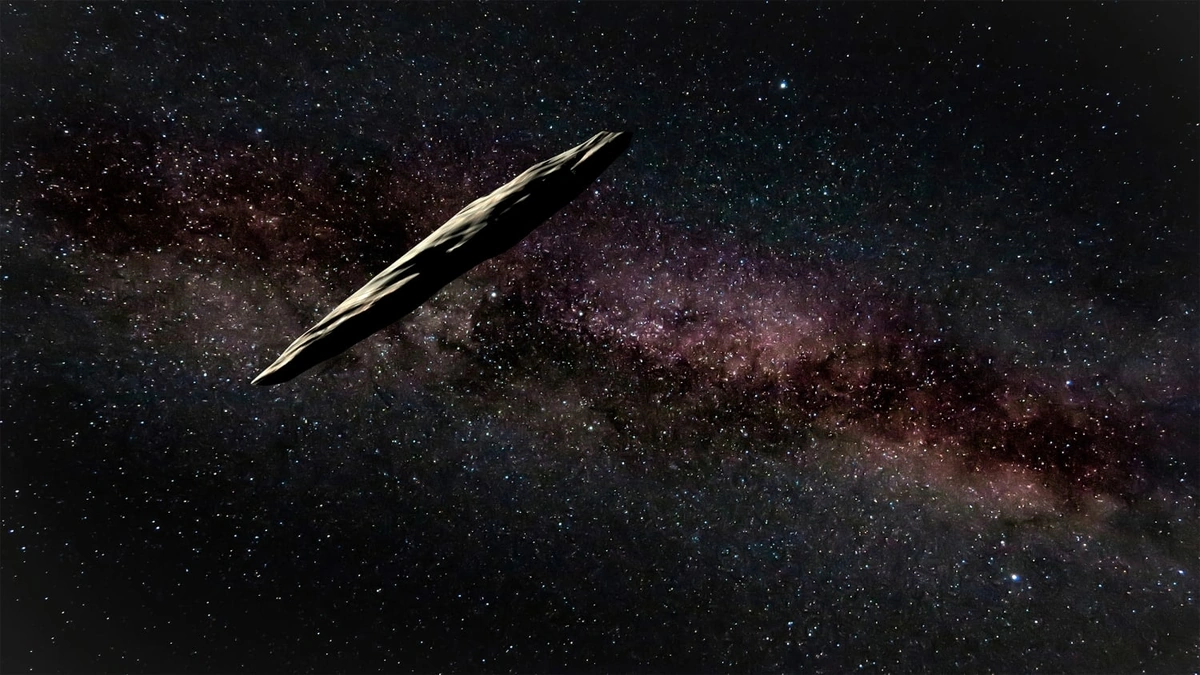Oumuamua. The name itself sounds like something out of a sci-fi novel, doesn’t it? But it’s not fiction. It was the first interstellar object ever detected passing through our solar system, back in 2017. And here’s the thing: it caused—and continues to cause—a lot of debate. Was it just a weirdly shaped asteroid? Or could it have been something…else? Let’s dive into the mystery.
The Initial Buzz and What We Thought We Knew
When Oumuamua (Hawaiian for “scout”) was first spotted by the Pan-STARRS telescope in Hawaii, astronomers were thrilled. Finally, proof that objects from other star systems can, and do, visit ours! Initial observations suggested it was a small, elongated object, tumbling through space. Think of it like a cosmic cigar. Its reddish color indicated a composition similar to some asteroids and comets we already know. But, and this is a big but, things quickly got strange.
The “Why”: The Unexplained Acceleration and The Extraterrestrial Hypothesis
Here’s where the plot thickens. As Oumuamua moved away from the Sun, it accelerated more than could be explained by gravity alone. Normally, when comets approach the sun, they release gases that act like a tiny rocket engine, propelling them forward. This is called outgassing. But Oumuamua showed no signs of this. No visible coma, no tail, nothing. So what was causing the extra push?
This is when the more outlandish theories started gaining traction, primarily fueled by Avi Loeb, a Harvard astrophysicist. Loeb suggested that Oumuamua might be a light sail – a technology we’ve been developing to propel spacecraft using the pressure of sunlight. The idea is that an advanced civilization could have sent this light sail into space, and we just happened to spot it.
Now, let’s be honest, the possibility of an extraterrestrial probe zipping through our solar system is incredibly exciting. But, I initially thought this was far-fetched, and many other scientists remain skeptical. Occam’s Razor suggests the simplest explanation is usually the right one. However, the complete absence of a natural explanation for the acceleration keeps the debate alive. This is the ” Oumuamua paradox ,” if you will.
Digging Deeper: Composition and Alternative Explanations
If it wasn’t an alien spaceship, what else could it be? One leading theory is that Oumuamua is a fragment of a planet that was torn apart by its star. Another suggests it’s a “dark comet” – a comet made of icy materials that don’t easily vaporize. But even these explanations have their problems. For example, where is the debris trail that this object would have left behind?
One team of researchers at Arizona State University has proposed that Oumuamua is made of nitrogen ice, similar to the surface of Pluto. They believe it could have been knocked off the surface of an exo-pluto, and that the sublimation of nitrogen ice – which would be invisible to our telescopes – could explain its acceleration. It’s an interesting thought and a plausible natural explanation. What fascinates me is that it requires us to expand our thinking about what’s possible in other star systems.
And, speaking of things that are hard to see, the nature of interstellar objects is extremely difficult to ascertain. What we know about Oumuamua comes from a relatively short observation window. The fact is, we simply didn’t have enough time to gather all the data we needed. But more observations are coming.
The Future of Interstellar Object Research
Oumuamua’s visit was a wake-up call. It highlighted the fact that we need to be better prepared to detect and study interstellar objects. And, thankfully, that’s exactly what’s happening. New telescopes, like the Vera C. Rubin Observatory, are being built with the specific goal of finding these visitors earlier and gathering more data.
The hope is that the next interstellar object we find will be spotted far enough away that we can get a good look at it before it whizzes past. This would allow us to answer some of the key questions that Oumuamua left unanswered: What is it made of? Where did it come from? And, of course, is there any chance it’s artificial?
Why This Matters: The Broader Implications for Space Exploration
So, why should we care about a weird space rock (or light sail) that zipped through our solar system several years ago? Because it has profound implications for our understanding of the universe. It tells us that our solar system isn’t unique – that objects are constantly being exchanged between stars. It also suggests that the building blocks of life, or even life itself, could potentially travel from one star system to another – a concept known as panspermia.
But, there’s also a very human element to it. Oumuamua sparked our curiosity and reminded us that there’s still so much we don’t know about the universe. It ignited our imaginations and fueled the debate about whether we’re alone. What’s more, the advanced technology needed to even begin to analyze these objects is extremely impressive.
As a friend of mine said, “Oumuamua is a Rorschach test for humanity. It shows us what we want to see: a confirmation of our deepest hopes and fears about the universe.” What fascinates me is that Oumuamua’s legacy isn’t just about what it was, but what it made us think about.
FAQ About Oumuamua
What exactly is Oumuamua?
Oumuamua is the first interstellar object detected passing through our solar system. Its classification is debated, with theories ranging from a natural asteroid or comet fragment to a hypothetical alien light sail.
Why was Oumuamua so controversial?
Its unusual acceleration as it moved away from the sun, without any visible signs of outgassing, led to speculation about its origin and nature, including the possibility of artificial construction.
Could Oumuamua have been dangerous to Earth?
No. Oumuamua passed Earth at a safe distance and posed no threat.
Will we ever know for sure what Oumuamua was?
Unfortunately, since Oumuamua has already left our solar system, it’s unlikely we’ll ever have definitive proof. However, future observations of similar objects may provide more insight.
What’s being done to find more interstellar objects like Oumuamua?
New telescopes, such as the Vera C. Rubin Observatory, are designed to detect these objects earlier, allowing for more comprehensive study.
Where did Oumuamua come from?
Its exact origin is unknown, but it likely originated from a star system far, far away.











